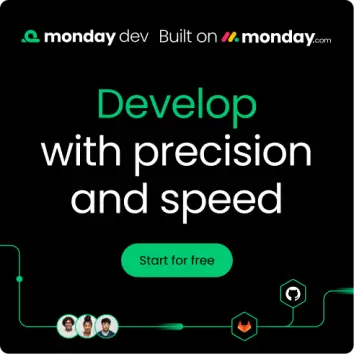Choosing the right Scrum tool is about more than ticking off features. It’s about finding a platform that matches your team’s size, goals, and style of working.
Whether you’re managing one sprint or scaling Agile across global teams, the right software can make all the difference in how you plan, collaborate, and deliver. In this article, we’ll dive into the key features, pricing, considerations, ratings, and reviews of 15 leading Scrum tools — including monday dev — to help you find the right fit for your team.
Try monday devAt a glance: top Scrum tools for 2025
To help you get started, we’ve pulled together a side-by-side comparison of the top 15 Scrum tools. Take a look and get an overview of features and pricing, then keep reading for deeper breakdowns, ratings, and real user reviews.
| Software | Use case | Standout feature | Starting price |
|---|---|---|---|
| monday dev | Agile software teams seeking robust, AI-powered management and deep third-party integrations | Workflow customization | $9/seat/month |
| Jira | Technical and Agile teams needing advanced customization, integrations, and in-depth analytics | Customizable workflows | $8.60/user/month |
| ClickUp | Agile teams looking for flexible Scrum workflows and built-in automation | Customizable views | $7/user/month |
| Trello | Small to midsized focusing on visual task management and ease of use | Visual Kanban boards | $5/user/month |
| Asana | Non-technical teams seeking simple, collaborative Scrum management | Task prioritization | $10.99/user/month |
| Miro | Distributed teams needing collaborative whiteboarding and Agile workflow visualization | Visual Scrum templates | $8/member/month |
| Scrumwise | Small to mid-sized Scrum teams seeking a simple, focused tool | Real-time updating | $9/user/month |
| VivifyScrum | Teams seeking built-in time tracking and invoicing | Built-in invoicing | $4/user/month |
| Nutcache | Agencies needing built-in time and budget tracking for Scrum | Time and billing integration | $13.95/user/month |
| Zoho Sprints | Teams already using the Zoho ecosystem | Backlog management | $1/user/month |
| Quickbase | Businesses needing customizable Scrum workflows without writing code | Low-code workflow automation | $35/user/month |
| Rally | Enterprises scaling Scrum/Agile across multiple teams and programs | Scaled Agile/portfolio support | $49/user/month |
| Teamwork | Agencies managing client work and internal Scrum projects | Integrated time tracking | $10.99/user/month |
| Azure DevOps | Enterprise dev teams managing Scrum and CI/CD pipelines | End-to-end DevOps integration | $6/user/month |
| Taiga | Small teams looking for an open-source, customizable Scrum tool | Open-source flexibility | Free open source |
Before we dive into each software’s details, let’s take a quick step back and cover what Scrum tools actually are and what features to look for when choosing one.
What are Scrum tools?
Scrum tools are specialized software applications designed to support teams that use the Scrum framework — a popular Agile methodology. Their primary purpose is to help teams organize and manage work in short, iterative cycles known as sprints, and to make complex projects more manageable by dividing them into smaller tasks and tracking progress in real time.
Key features of Scrum tools
- Scrum boards: Track the state of each task with visual columns like “To Do,” “In Progress,” and “Done.”
- Sprint management: Structure and break down work into sprints, assigning tasks to team members.
- Backlog management: Prioritize and organize all tasks and work items (features, bugs, technical work) that need to be done.
- Progress tracking: Utilize charts and dashboards, such as burndown charts, to monitor the amount of work remaining in each Scrum sprint.
- Collaboration tools: Enable communication through comments, file sharing, and notifications.
- Retrospective tools: Provide structured formats for teams to review what worked, what didn’t, and how to improve.
- Reporting and analytics: Offer insights into team performance, sprint velocity, and completion rates.
- Integration capabilities: Connect with other tools like GitHub, GitLab, Microsoft Teams, and Slack.
How AI is revolutionizing Scrum management
AI is transforming Scrum management by automating routine tasks, providing actionable insights, and enhancing team productivity across every stage of the Agile process. Modern AI-powered features include automated sprint planning (like suggesting optimal workload distributions), intelligent backlog prioritization based on historical performance and risk, and real-time anomaly detection that flags blocked tasks or delays before they escalate.
AI also streamlines daily standups with automatic progress summaries, generates executive-level sprint reports, and accelerates retrospective meetings with sentiment analysis and thematic trend detection.
Many platforms — such as monday dev, Jira via Atlassian Intelligence, and ClickUp AI — offer instant task breakdowns, smart recommendations on user stories, and natural-language automation builders, allowing even non-technical teams to optimize workflows without manual configuration.
For distributed teams, AI enhances collaboration by surfacing dependencies, predicting bottlenecks, and automating cross-team notifications. As AI continues to evolve, it empowers Scrum teams to work faster, adapt to change more efficiently, and continuously improve outcomes based on real-time data-driven advice.
Top 15 Scrum tools for 2025
With so many different Scrum tools available, choosing the best one for your business can be challenging. To help narrow the field for your Scrum team, here are the key features, considerations, pricing, and ratings to give you a flavor of how each tool could fit your approach to the Scrum methodology.
1. monday dev
Use case: Agile software teams seeking robust, AI-powered management and deep third-party integrations
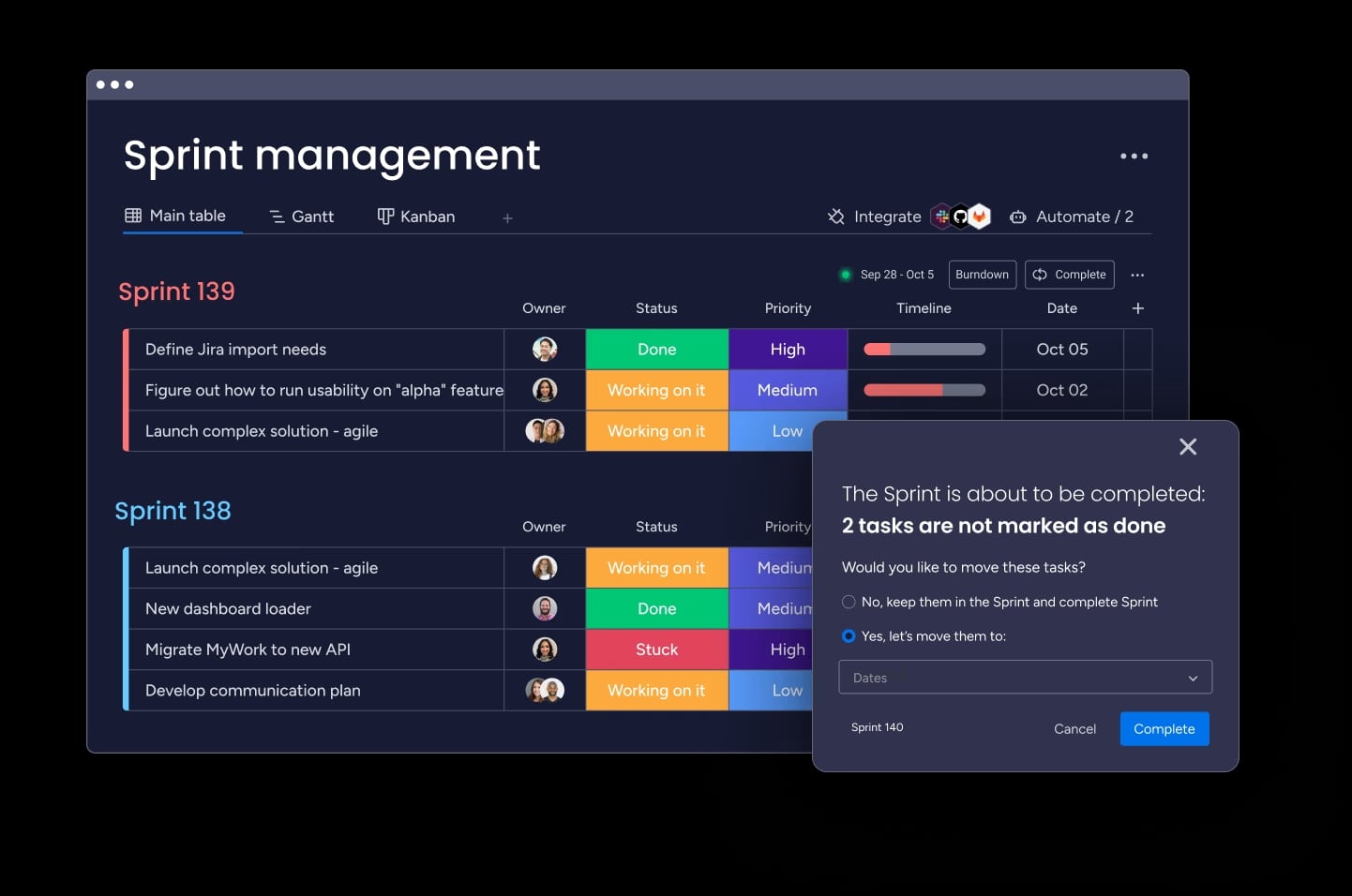
Built on monday.com Work OS, monday dev empowers teams to manage sprints, releases, and bug tracking on one highly customizable product development platform. Advanced automations and built-in AI insights streamline cross-team collaboration and continuous delivery.
Key features of monday dev
- Sprint management
- Roadmap planning
- Sprint backlog
- Burndown charts
- Bug tracking
monday dev considerations
- AI Blocks can categorize bugs, summarize info, and assign tasks automatically
- Automations eliminate repetitive work
- Integrations connect easily with GitHub and other dev tools
- Reporting and dashboards are highly customizable
- No free forever plan
- Pricing starts with a minimum of 3 users
- Some features may feel overwhelming to non-technical users
monday dev pricing
Start with a 14-day free trial (no credit card required) and then choose from a premium plan:
- Basic: From $9/seat/month
- Standard: From $12/seat/month
- Pro: From $20/seat/month
- Enterprise: Custom pricing available on request
Learn more about monday dev pricing.
monday dev ratings and reviews
“monday dev makes it much more seamless to create, track, monitor, and manage our backlog and sprints. It allows us to maintain an iterative approach to our projects for an accelerated delivery of MVP, as well as manage what we have in our backlog. I appreciate the additional features that aren’t available in WM! My direct team has almost entirely shifted to monday dev and it is proving to be very successful. We were able to easily implement our processes there and integrate with our other systems for a seamless transition. There have been several bugs we’ve seen, but those have since been resolved. No complaints as of now! The issues were resolved quickly by support and that allowed us to continue moving forward. — Heather S.
Compare:
Try monday dev2. Jira
Use case: Technical and Agile teams requiring advanced customization, integrations, and in-depth analytics
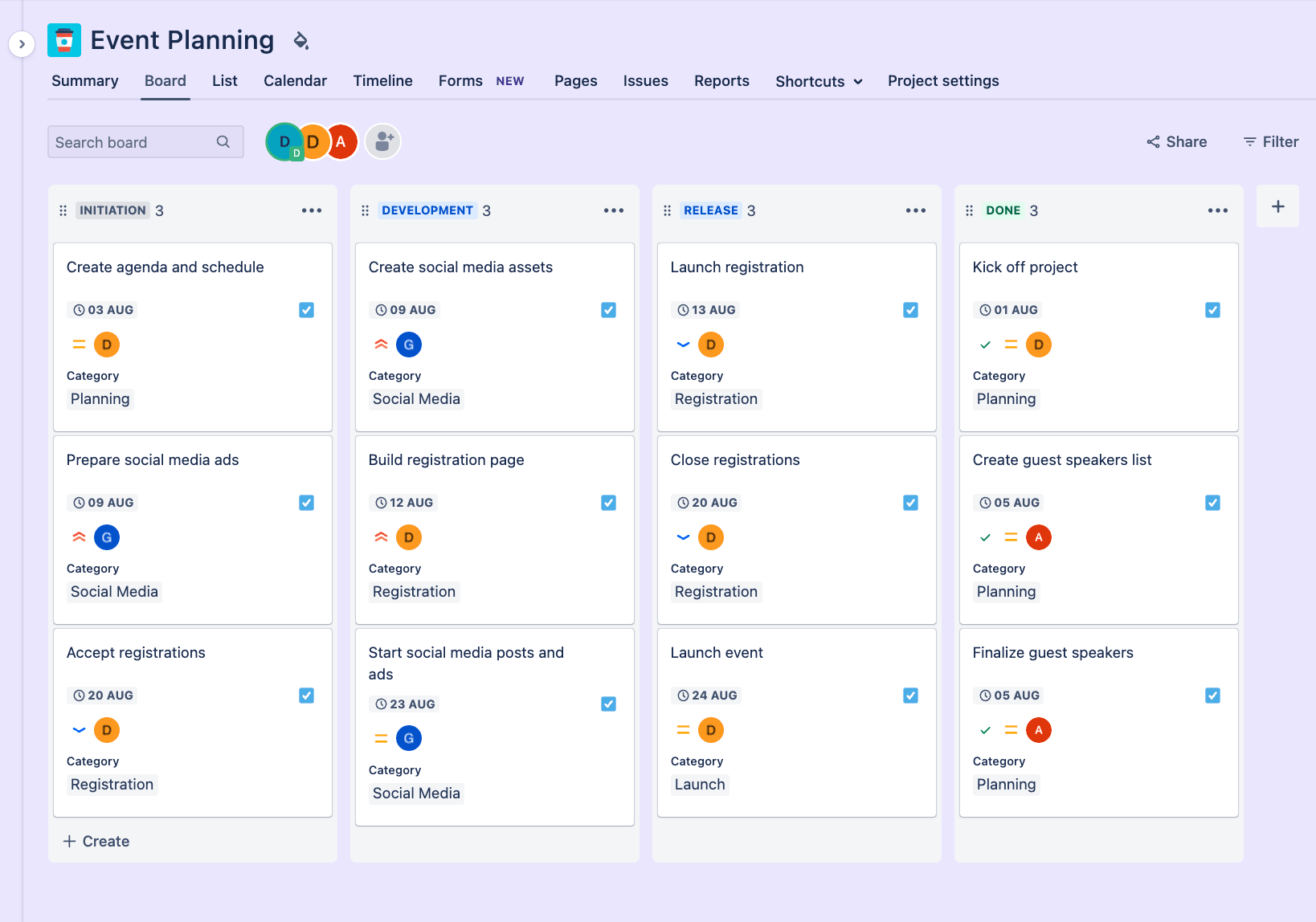
Jira streamlines Agile project management for technical teams, offering a highly customizable environment that scales from startups to enterprises. Its deep integrations, robust automation, and data-driven reporting create a collaborative workspace that supports the Scrum principles.
Key features of Jira
- Sprint planning
- Backlog management
- Scrum boards
Jira considerations
- AI features available via Atlassian Intelligence
- Issue tracking is feature-rich and reliable
- Seamless integration with other Atlassian products
- Customizable workflows fit your team’s processes
- Steep learning curve, especially for non-technical users
- Less effective for non-development teams
- Limited built-in idea management and collaboration tools
Jira pricing
Jira’s pricing works on a sliding scale where you pay less per user the more you have. There’s a Free Forever plan (for teams of up to 10) and premium plans:
- Standard: From $8.60/user/month
- Premium: From $17/user/month
- Enterprise: Custom pricing (for 801+ users)
Read more about Jira’s plans and pricing.
Jira ratings and reviews
“As much as Jira is helpful, it can feel a bit heavy at times — especially for smaller tasks or quick fixes. Sometimes there are just too many fields or steps to create a simple ticket, and it slows things down. Also, when multiple teams customize their workflows differently, it gets a bit confusing to navigate between boards. At Awiros, we’ve learned to work around it, but there’s definitely a learning curve for new team members.” — Atishay J.
Compare:
3. ClickUp
Use case: Agile teams looking for flexible Scrum workflows and built-in automation
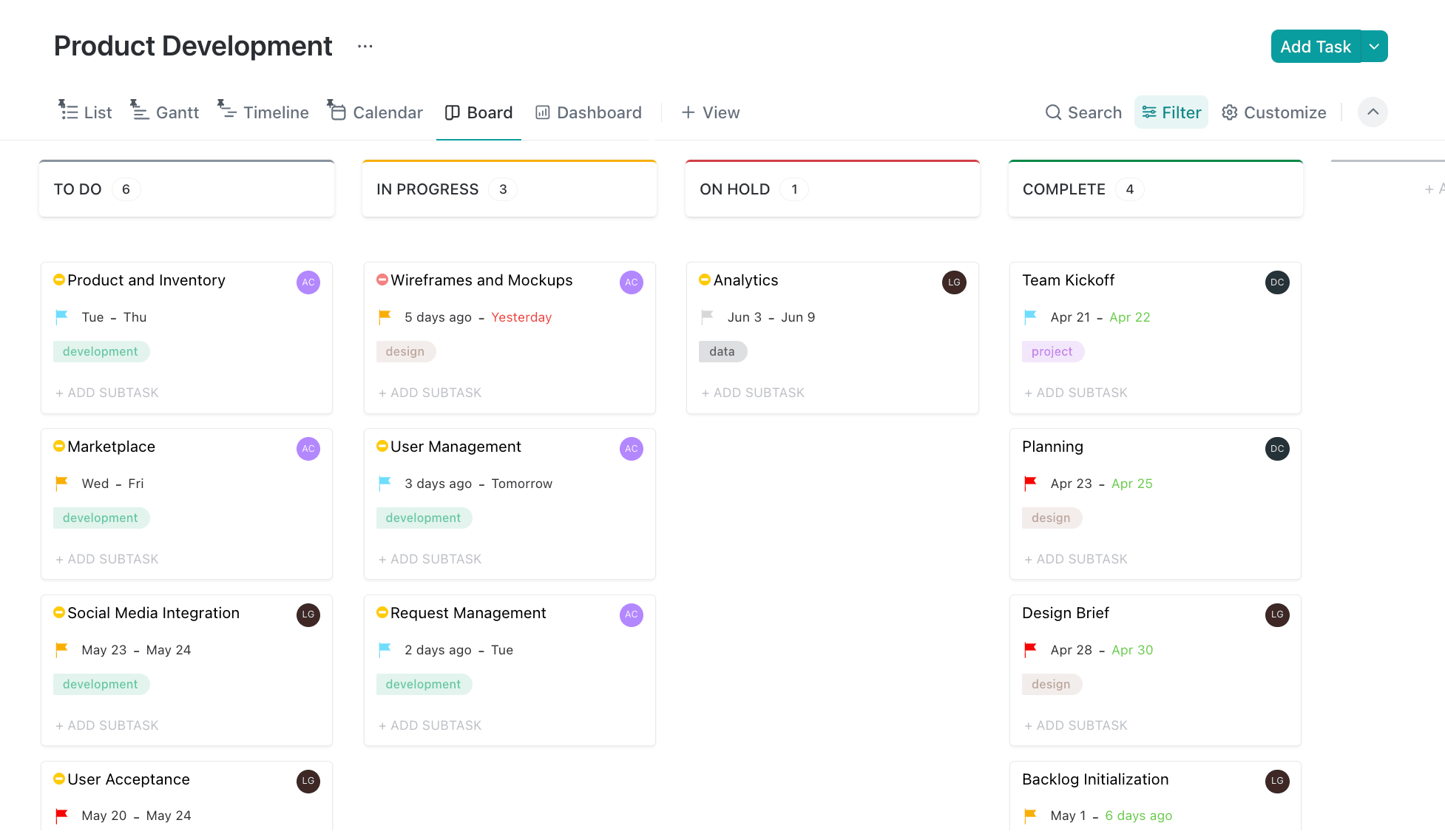
ClickUp unifies task, sprint, and backlog management with customizable views and templates, enabling Agile teams to adapt quickly. Its automation engine and integrations make it suitable for diverse, cross-functional teams.
Key features of ClickUp
- Board/list/timeline views
- Backlog management
- Automations
ClickUp considerations
- ClickUp AI only available as a premium add-on
- Drag-and-drop customization simplifies workflows
- Limited integration options compared to competitors
- Generous freemium tier available
- Steep learning curve for new users
- Limited scalability for large product teams
- Built-in reporting and time tracking
ClickUp pricing
ClickUp offers a Free Forever plan (for individuals) and several premium plans:
- Unlimited: From $7/user/month
- Business: From $12/user/month
- Enterprise: Custom pricing available from the vendor
- ClickUp Brain: Add AI to any paid plan for $7/user/month
Read more about ClickUp’s plans and pricing.
ClickUp ratings and reviews
“ClickUp allows me to do things that can’t otherwise be done due to their complexity and breadth of team members involved. I use it to store, manage and plan every single area of my life and business and the beautiful UI delights me to do so!” — Michael M.
Compare:
4. Trello
Use case: Small to midsized focusing on visual task management and ease of use
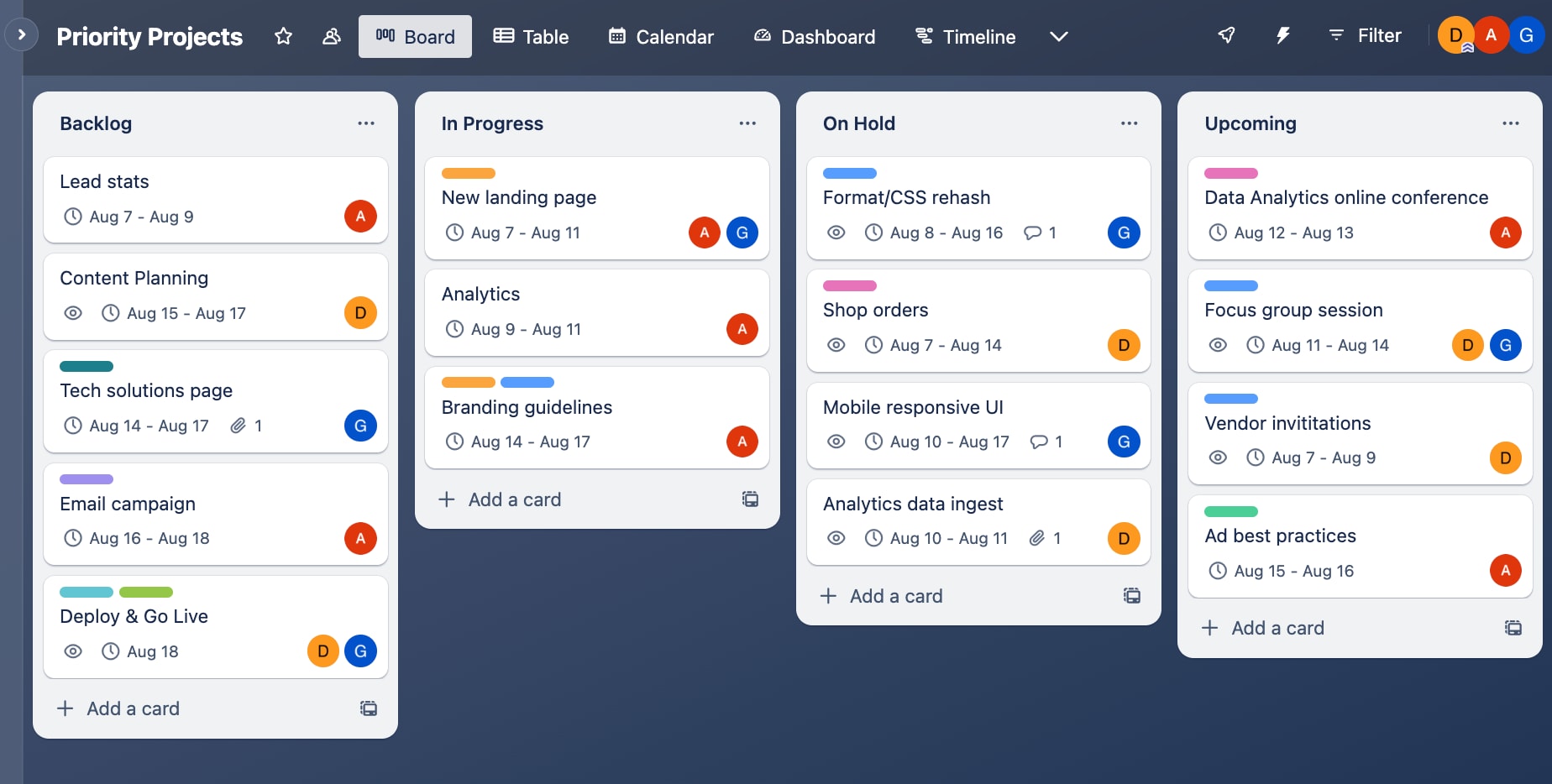
Trello is an Atlassian-owned project management platform with an intuitive Kanban-style interface. Its low learning curve and AI features make it ideal for visual project management and lightweight sprints.
Key features of Trello
- Task boards, lists, and cards
- Customizable board templates
- Automation rules and commands
Trello considerations
- AI-powered inbox, to-do capture, and recommendations
- Drag-and-drop workflow customization
- Native integration with Jira
- Power-Ups expand features as needed
- Limited advanced reporting
- Free version is feature-rich
- Not built for complex enterprise Agile
Trello pricing
Trello offers a Free Forever plan and comprehensive premium packages:
- Standard: From $5/user/month
- Premium: From $10/user/month
- Enterprise: From $17.50/user/month
Read more about Trello plans and pricing.
Trello ratings and reviews
“Trello remains one of the most user-friendly and visually intuitive project management tools I’ve worked with. The drag-and-drop Kanban board style makes it effortless to organize tasks and workflows, whether for solo projects or team collaboration. While Trello is excellent for organizing and visualizing tasks, it can become cluttered when managing larger or more detailed projects. Also, some advanced functionality (like timeline or Gantt views) requires paid add-ons or upgrades, which may be limiting for teams on a tight budget. Native reporting tools are still a bit basic compared to other platforms.” — Mohamed Haithem M.
Compare:
5. Asana
Use case: Non-technical teams seeking simple, collaborative Scrum management
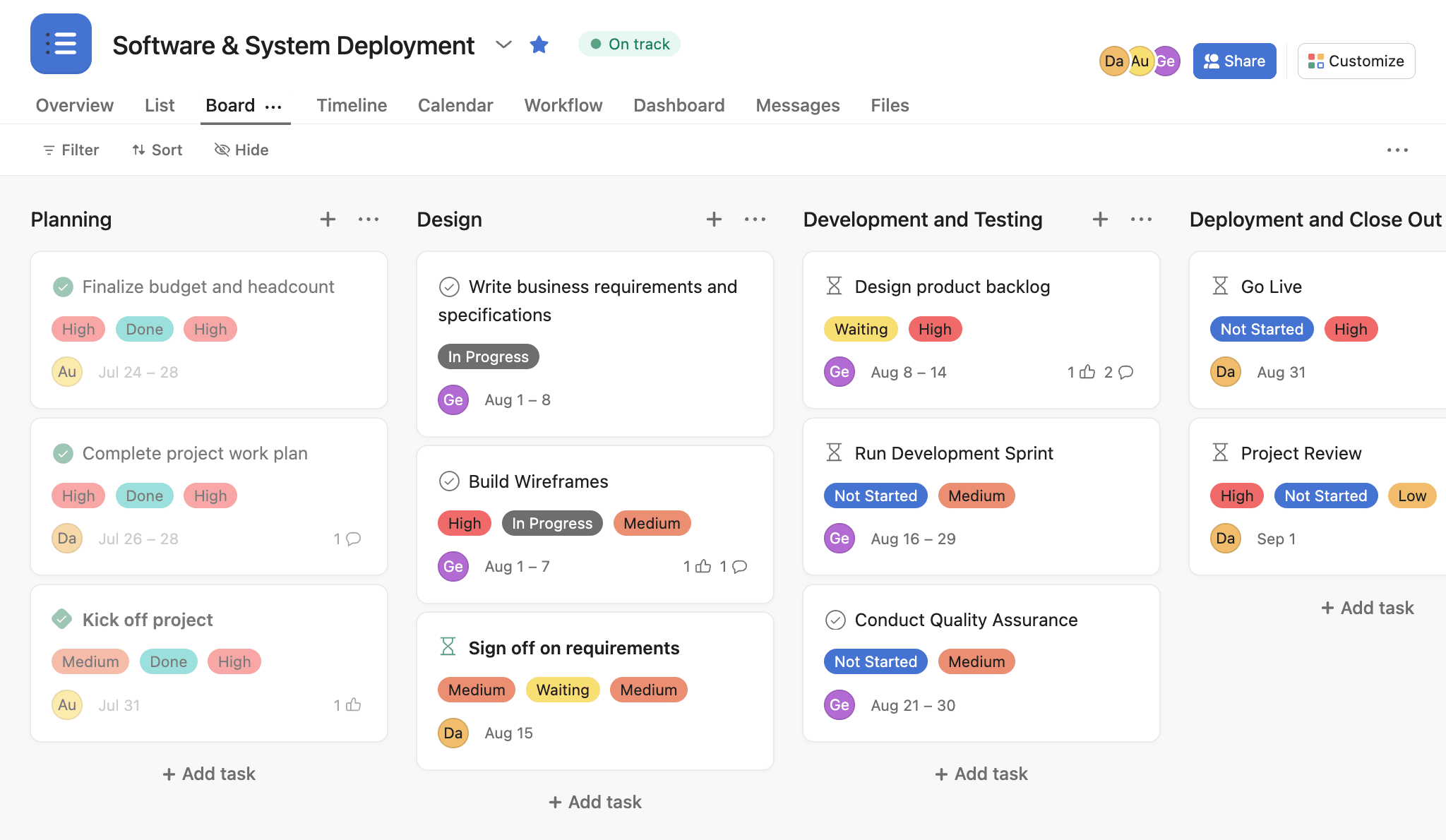
Asana is a work management platform with multiple project views and cross-team collaboration. It supports both Agile and hybrid project styles with epics, features, and stories.
Key features of Asana
- Board and timeline views
- Task management
- Workflow automation
Asana considerations
- Built-in AI for smart suggestions and workflow automation
- Clean, intuitive user experience
- Task dependencies and calendar features
- Wide integration ecosystem
- Some Agile functionalities are basic
- Mobile support across devices
- Cost increase for large deployments
Asana pricing
Asana offers a Free Forever plan (for individuals and small teams) and a choice of premium packages:
- Starter: From $10.99/user/month
- Advanced: From $24.99/user/month
- Enterprise: Contact sales for pricing
- Enterprise+: Contact sales for pricing
Learn more about Asana’s plans and pricing.
Asana ratings and reviews
“Asana has revolutionized the way I manage projects. Its intuitive interface and customizable workflows allow me to stay organized and keep track of all my tasks in one place. I love the integration options with other tools I use daily, like Google Drive and Slack. The collaborative features make it easy to communicate with my team, and the calendar view is perfect for visualizing what I need to get done each day. The only downside I’ve encountered is that the mobile app can feel a bit clunky when managing larger, more complex projects.” — Lucinda F.
Compare:
6. Miro
Use case: Distributed teams that require collaborative whiteboarding and Agile workflow visualization
Miro is a visual workspace that allows teams to communicate, collaborate, and make fast decisions in real time. Visual tools like estimation apps, timelines, and interactive voting enhance teamwork regardless of location.
Key features of Miro
- Scrum boards
- Sprint planning
- Backlog management
Miro considerations
- AI-based meeting facilitation, diagram creation, and note summarization
- Enables async and real-time workshops
- Templates for sprints, retrospectives, and standups
- Integration with Jira and Azure DevOps
- Activity tracking and reporting
- Primarily visual, so less suited for detailed reporting
- Generous free tier
Miro pricing
Miro offers a Free Forever plan for unlimited members, as well as several paid plans for collaborative teams:
- Starter: From $8/member/month
- Business: From $16/member/month
- Enterprise: Custom pricing
Miro ratings and reviews
“Miro’s interface is intuitive and user-friendly. The pre-built templates are highly customizable, so you can adjust them to fit your specific needs. What truly sets Miro apart is its collaboration capabilities. Multiple users can work simultaneously on the board, seeing each other’s changes in real-time. This is perfect for teams working remotely or in different time zones, as everyone can contribute seamlessly.” — Dessislava D.
Compare:
7. Scrumwise
Use case: Small to midsized Scrum teams looking for a simple, focused tool.
Scrumwise combines simplicity with real-time updates and intuitive drag-and-drop management. Software and product development teams can organize sprints, backlogs, and progress with minimal configuration.
Key features of Scrumwise
- Sprint planning
- Backlog management
- Burndown charts
Scrumwise considerations
- No native AI features
- Simple, intuitive UI
- Optional Kanban boards for extra functionality
- Simple team setup and role assignment
- GitHub integration for dev teams
- Limited advanced analytics
- Limited reporting
Scrumwise pricing
Scrumwise offers a 30-day free trial, with paid plans starting at $7.50/user/month (billed annually).
Scrumwise ratings and reviews
- G2: 4.3/5 (2 reviews)
- Capterra: 4.2/5 (10 reviews)
- TrustRadius: No reviews
“You can use backlogs, attach files to tasks and histories. The visual display is appealing and it feels like it’s a real Scrum board.” — Edumey M.
8. VivifyScrum
Use case: Teams seeking built-in time tracking and invoicing
VivifyScrum offers all-in-one Scrum and Kanban boards, extensive team management, and built-in invoicing and time-tracking. Its flexibility makes it fit both small companies and growing Agile teams.
Key features of VivifyScrum
- Scrum and Kanban boards
- Backlog management
- Team management
VivifyScrum considerations
- No native AI capabilities
- Time tracker and worklogs included
- Multiple Agile project views
- Engagement and availability analytics
- Invoicing for clients
- Less third-party integration than larger platforms
- Free trial includes all premium features
VivifyScrum pricing
VivifyScrum offers a free 7-day trial with access to all premium features, followed by several paid plans:
- Starter: From $96/year for up to 10 members
- Standard: From $4.80/user/month for 11-50 members
- Growth: From $4/user/month for 51-100 members
- Enterprise: Custom pricing for 100+ members
VivifyScrum ratings and reviews
“Its ease of use in case of adding stories and tasks and the great user experience for both the developer team and managers, an integrated time tracker with work log reports, nice burndown charts and reports, configurable settings for each board and nice hotkeys with a great customer support led us to migrate from another platform to vivify Scrum.” — Sajjad S.
9. Nutcache
Use case: Agencies needing built-in time and budget tracking for Scrum
Nutcache is a project management platform that blends task, time, and expense management with Scrum boards and budget tracking. It gives engineers and architects the tools they need to turn ideas into action.
Key features of Nutcache
- Time tracking
- Scrum boards
- Backlog management
Nutcache considerations
- No specialty AI features
- Per-project budget tracking
- Real-time boards and workflows
- Simple onboarding for new users
- Integrated invoicing tools
- Limited advanced reporting
- Third-party integrations are improving
Nutcache pricing
Nutcache offers a free version (upon request) and several paid plans with advanced features:
- Pro: From $13.95/user/month
- Enterprise: From $23.95/user/month
- Corporate: Custom pricing
Nutcache ratings and reviews
- G2: 4.1/5 (10+ reviews)
- Capterra: 4.4/5 (160+ reviews)
- TrustRadius: No reviews
“Nutcache made it easy to keep track of multiple client projects, and to sub-categorize within the project by different services we offer.” — Jennifer R.
10. Zoho Sprints
Use case: Teams already using the Zoho ecosystem
Zoho Sprints is an Agile project management platform with integrated time tracking and extensive reporting for continuous improvement. It offers a comprehensive suite of tools for managing product backlogs, sprints, and releases, enabling teams to collaborate effectively and adapt quickly to changing requirements.
Key features of Zoho Sprints
- Scrum boards
- Release management
- Time tracking
Zoho Sprints considerations
- Built-in Zia AI for insights and recommendations
- Drag-and-drop sprint planning
- Detailed velocity and burndown charts
- Mobile apps for Android/iOS
- Pricing scales affordably
- Unsuitable for enterprise Agile
- Native integration with other Zoho apps
Zoho Sprints pricing
Zoho Sprints offers a Free Forever plan and several affordable paid options:
- Starter: From $1/user/month
- Elite: From $2.50/user/month
- Premier: From $5/user/month
Zoho Sprints ratings and reviews
“The interface is clean and easy to navigate, making it simple to manage sprints and track progress. The customizable workflows are a huge plus, allowing us to tailor the tool to our specific needs. I especially appreciate the backlog management feature, which helps us prioritize tasks effectively. Real-time collaboration tools like comments and notifications keep everyone in the loop, ensuring smooth communication. Overall, Zoho Sprints has made project management more streamlined and efficient for my team.” — Santosh S.
Compare:
11. Quickbase
Use case:Businesses needing customizable Scrum workflows without writing code
Quickbase combines low-code app building with Scrum-ready boards and dashboards, ideal for teams that want to tailor solutions. Automations, customizable forms, and analytics set it apart for cross-functional use.
Key features of Quickbase
- Scrum boards
- Dashboards
- Integrations
Quickbase considerations
- Built-in AI tools for automations and analysis
- No-code custom app builder
- Versatile workflow automation
- Robust reporting
- Integration with cloud/file shares
- More complex setup for non-IT users
- Higher pricing than basic Scrum tools
Quickbase pricing
Although Quickbase doesn’t offer a free plan, it does offer a free 30-day trial with all business features. Then, choose from a premium plan:
- Team: From $35/user/month
- Business: From $55/user/month
- Enterprise: Custom pricing
Read more about Quickbase’s plans and pricing.
Quickbase ratings and reviews
“Easy deployment of any project in Kanban and Scrum framework and it also helps me to create on and off boarding tickets with associated workflows in the background. Learning how to use it effectively requires some time and effort.” — Edgar N.
Compare: Best Airtable alternatives
12. Rally (Broadcom)
Use case: Enterprises scaling Scrum/Agile across multiple teams and programs
Rally (formerly CA Agile Central) specializes in enterprise Agile with large-scale portfolio and backlog management. It supports SAFe, custom dashboards, and advanced release tracking.
Key features of Rally
- Scrum boards
- Release management
- Backlog management
Rally considerations
- Limited AI features
- Deep reporting and advanced analytics
- Scales for hundreds of teams
- Supports SAFe and large projects
- Complex interface for small teams
- Higher total cost of ownership
- Integrations with enterprise platforms
Rally pricing
Contact Broadcom for custom enterprise pricing (approx. $49/user/month).
Rally ratings and reviews
“I really like how Rally expands on user stories and tasks. The tool is designed for software related projects, or anything that can be run in iterations or sprints. The cost per license can be pretty pricey. I also don’t like the dashboard view, I feel that as soon as you log in the UI could be designed better to be more friendly.” — Harrison S.
13. Teamwork.com
Use case: Agencies managing client work and internal Scrum projects
Teamwork streamlines project planning with task lists, time tracking, Gantt charts, and real-time collaboration. Its broad toolkit makes it suitable for agencies managing multiple Scrum or client projects.
Key features of Teamwork.com
- Scrum boards
- Time tracking
- Gantt charts
Teamwork.com considerations
- Built-in AI for task management and time estimates
- Easy client collaboration
- Budget and invoice tools
- Flexible project templates
- Gantt and calendar views
- Some features require higher plans
- Limited functionality on mobile app
Teamwork.com pricing
Teamwork offers a Free Forever plan for small teams (up to 5 users) and several paid plans for growing businesses:
- Deliver: From $10.99/user/month
- Grow: From $19.99/user/month
- Scale: Custom pricing
- Enterprise: Custom pricing
Teamwork.com ratings and reviews
“I really appreciate how much thought Teamwork has put into making their interface attractive and easy to navigate…I also find it impressive how Teamwork works across multiple teams in any type of organisation; its extensive capabilities allow many users from a range of marketing, design or software development backgrounds to take advantage of its benefits. If you are familiar with Scrum practices when working within an Agile framework, then this platform can be incredibly useful for your workplace needs.” — Mike W.
Compare: Best Teamwork alternatives
14. Azure DevOps
Use case: Enterprise dev teams managing Scrum and CI/CD pipelines
The Azure DevOps suite of tools supports Agile/Scrum projects with sprint planning, customizable boards, CI/CD, and native cloud integrations. Its strength lies in end-to-end software delivery and enterprise security.
Key features of Azure DevOps
- Azure Boards
- Azure Pipelines
- Azure Repos
Azure DevOps considerations
- AI-driven pipeline suggestions via Azure AI services
- Seamless integration with Microsoft tools and services
- Powerful automation and extensibility
- Enterprise-ready with SSO/security
- Initial setup can be complex
- Not ideal for non-technical teams
- Free for small teams
Azure DevOps pricing
With a free plan for up to 5 users, Azure DevOps also has paid plans for enterprise development:
- Basic: $6/user/month
- Basic + Test Plans: $52/user/month
Azure DevOps ratings and reviews
“As a devops engineer this software is great to manage our pipelines and Scrum boards. Compared to other software, it is easy to manage and run pipelines and fix the issues. Sometimes I am not able to find the user story in the running sprint, then I have to search by user story number. That is a little annoying.” — Kamaljeet S.
Compare:
15. Taiga
Use case: Small teams looking for an open-source, customizable Scrum tool
Taiga offers open-source Scrum and Kanban boards with slick design and community-driven features. Fast onboarding and affordable pricing make it ideal for startups and small teams.
Key features of Taiga
- Scrum boards
- Sprint planning
- Backlog management
Taiga considerations
- No native AI capabilities
- Free for open-source projects
- Highly customizable
- Minimalist, clear UI
- Hosted and self-hosted options
- Community support and extensions
- Smaller ecosystem than major players
Taiga pricing
Taiga has a Free Forever plan (for open-source projects) and several paid options:
- Taiga Cloud Basic: Free with community support
- Taiga Cloud with Premium Support: 70€/month (unlimited users)
- Taiga On Your Premises: Quote available upon request (ideal for teams of 25+)
Taiga ratings and reviews
- G2: 4.4/5 (70+ reviews)
- Capterra: 4.3/5 (80+ reviews)
- TrustRadius: Not enough data
“Taiga has a simple interface with a combination of solid project management features. It supports Kanban, Scrum and hybrid workflows, thus allowing teams to tailor their project management experience. Additionally, it has a task board, sprint planning tools, that makes it easy to track progress and the team members can communicate easily.” — Charmy S.
Why use Scrum tools?
Few Scrum teams today manage product development using only printouts and clipboards. While some might try to coordinate work with a combination of email threads, shared drives, and online meetings, this approach quickly becomes unmanageable as the project grows or involves more stakeholders. When friction and inefficiency become common, switching to a dedicated Scrum tool is often the smarter choice.
Here’s what the right Scrum software can do:
- Make work visible: Track every user story, bug, and task across customizable boards and sprint views.
- Keep everyone aligned: Centralize backlog updates, team communication, and sprint progress in one place.
- React in real time: Shift priorities mid-sprint, reassign work, and unblock team members without missing a beat.
- Learn and improve faster: Use built-in retrospectives, burndown charts, and performance insights to optimize each sprint.
Who uses Scrum tools?
Scrum tools are widely used across a variety of industries and team types — not just software development. Originally designed for IT and software teams to manage complex product development, today Scrum tools support project managers, product owners, marketers, event planners, educators, healthcare providers, and even operations specialists in industries including finance, construction, automotive, and more.
Within organizations, users include:
- Software development teams looking to manage sprints, backlogs, and releases.
- IT operations teams handling upgrades and deployments.
- Marketing and creative teams running iterative campaigns and content workflows.
- Manufacturing, education, and healthcare teams coordinating complex projects or improving processes.
Scrum’s popularity is reflected in surveys: 63% of Agile teams worldwide have adopted Scrum or a Scrum-based approach, from global enterprises like Amazon, Netflix, Salesforce, and Lego, to universities and healthcare organizations. The versatility of Scrum tools — including platforms like monday dev — empowers cross-functional teams in any sector to organize work transparently, collaborate in real time, and respond quickly to changing requirements or market conditions.
Power your Scrum projects with monday dev
Built on monday.com Work OS, monday dev allows your Scrum teams to ideate, plan, visualize, and iterate from the comfort of an intuitive Agile platform. Here are some of the top features you’ll want in your next Scrum project.
Sprint management: Manage the lifecycle of your sprints by assigning sprint tasks and workflows from a single location.
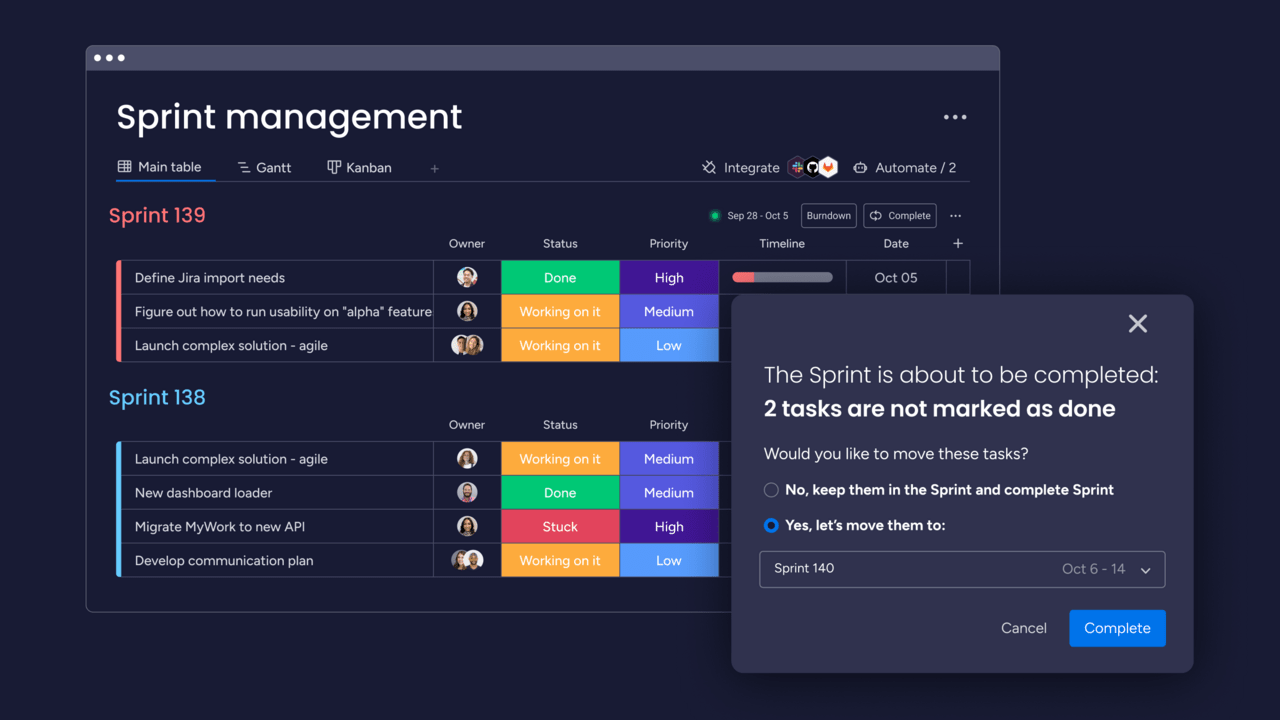
Burndown charts: Spot any bottlenecks holding back your Scrum projects by comparing sprint progress to remaining effort. Based on this intel, commit more resources, reallocate tasks, or modify your sprints to stay on track.
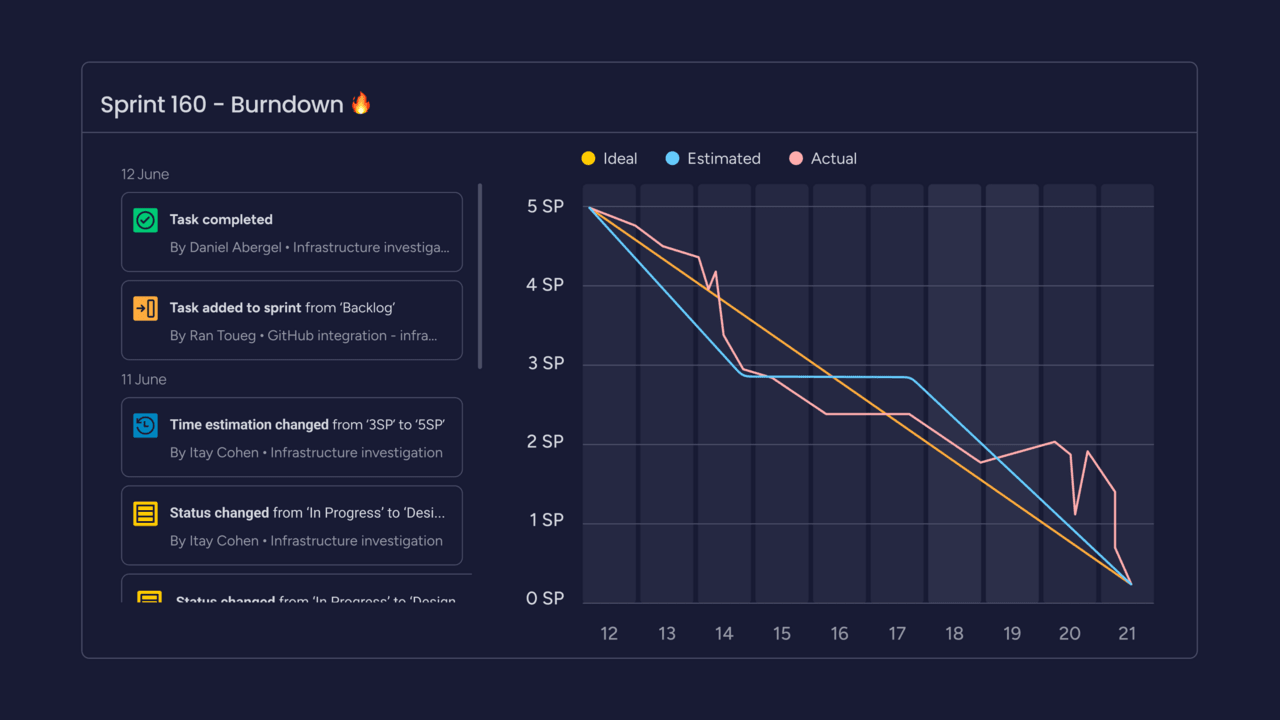
Bug tracking: Resolve any bugs or issues effortlessly by tracking incoming bugs, assigning priority development activities to specific team members, and then logging the resolution.
Integrations: Keep all your Scrum work in a central location by syncing monday dev with essential third-party tools like GitHub, GitLab, Slack, and Microsoft Teams.
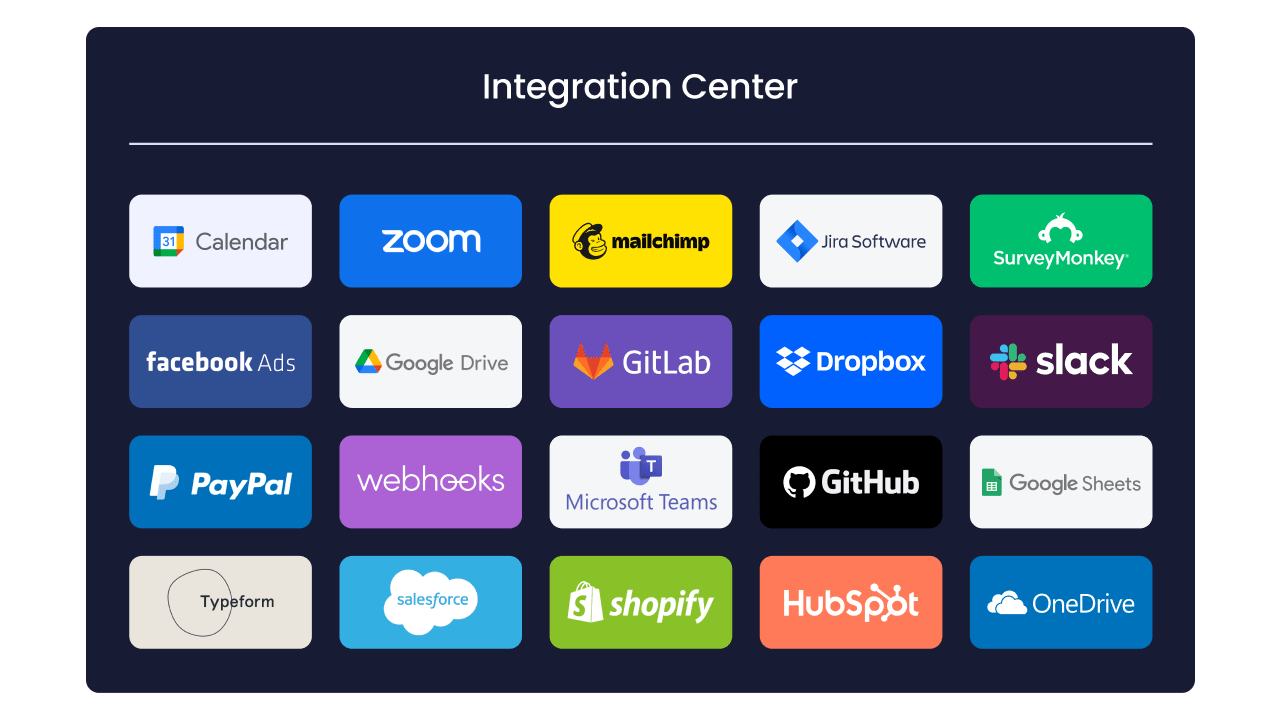
AI-powered workflows: Streamline your Scrum projects even more with ready-made actions that proactively solve development bottlenecks, accurately forecast velocity, and highlight performance trends. From summarizing product specs and categorizing bugs to extracting insights from user feedback, AI Blocks automate the tasks that slow you down — all without writing a single line of code.
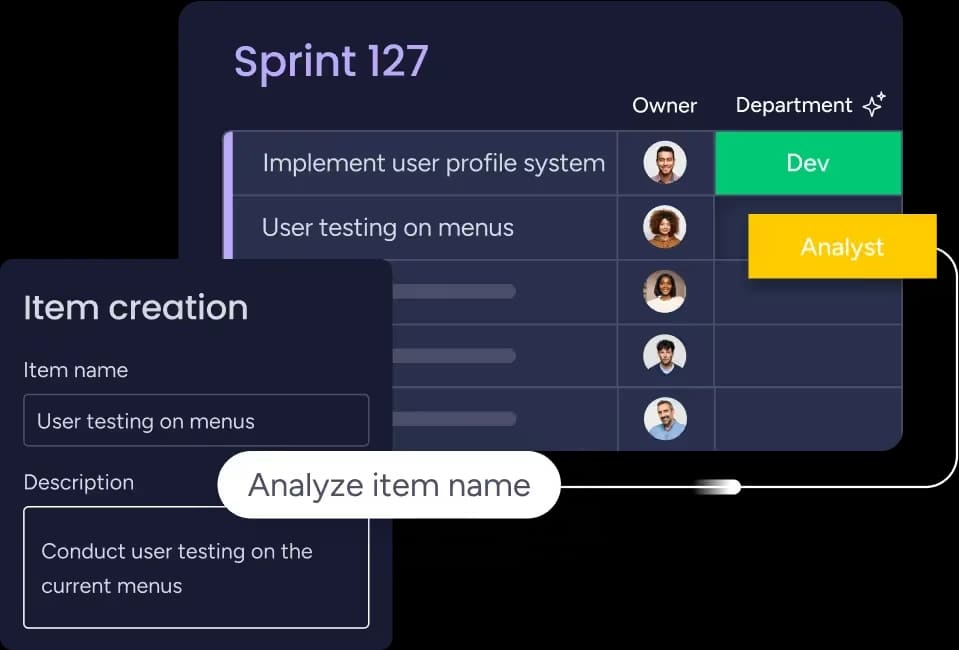
Ready to invest in a Scrum tool your teams will want to use over and over again? Book a free monday dev trial today.
Try monday devFAQs about Scrum tools
Is Scrum a tool or a skill?
Scrum is neither a tool nor a skill — it’s a framework for managing complex projects using Agile principles. It defines specific roles, events, and artifacts to guide teams through iterative work cycles. While Scrum itself is a framework, successfully practicing it requires skills like collaboration, facilitation, and adaptability. Tools like monday dev help teams implement Scrum effectively.
Are Scrum tools suitable for all types of projects?
Scrum tools — such as monday dev — are designed to support projects where requirements may change and teams need to adapt quickly. They work well for software and product development but are also used in non-IT contexts like marketing and design. However, highly regulated, linear, or simple projects may not benefit as much from Scrum’s flexible, iterative approach.
What’s the difference between Agile and Scrum tools?
Agile tools facilitate the adoption of Agile principles for project management and supporting approaches like Kanban, Lean, or Extreme Programming, as well as Scrum. Scrum tools specifically enable teams to practice the Scrum framework, with features for sprints, backlogs, roles, and Scrum boards. For example, monday dev provides Agile tools, like Scrum and Kanban, as well as supporting hybrid and custom methodologies, allowing teams to choose the method that fits their workflow best.
What is a Scrum tool?
A Scrum tool is a software platform — like monday dev — that helps Agile teams plan, organize, and track work using the Scrum framework. It provides features for managing sprints and backlogs, visualizing progress on Scrum boards, and centralizing collaboration, helping teams stay aligned and deliver efficiently.
What is the best tool for Scrum?
The best Scrum tool depends on your team’s specific needs. Jira is a popular choice for large, technical teams, offering deep customization and reporting. However, monday dev stands out for its intuitive interface, powerful automations, and AI-driven insights — providing scalable solutions for teams seeking modern, flexible, and user-friendly Scrum project management.
Is Jira a Scrum tool?
Yes, Jira is a Scrum tool, trusted by many software development teams to manage sprints, product backlogs, and workflows according to Agile and Scrum best practices. Elsewhere, product and engineering teams prefer to use monday dev as it can streamline sprint planning, enhance collaboration, and support rapid iteration for diverse groups.
What are the 5 Cs of Scrum?
The 5 Cs of Scrum are core values that guide how successful Agile teams collaborate and grow and are:
- Commitment
- Courage
- Focus
- Openness
- Respect
Platforms like monday dev foster these values by making work visible, encouraging transparency, and providing the structure that helps teams stay focused and continuously improve.
 Try monday dev
Try monday dev 


